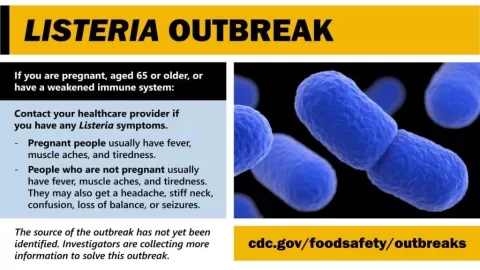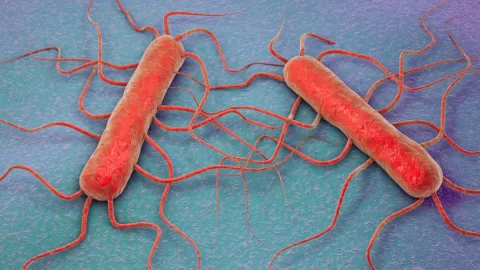Biothreat diagnostics play a crucial role in safeguarding public health security by enabling swift identification of biological threats. With recent funding of nearly $27 million announced by the U.S. Department of Health and Human Services (HHS), there is a renewed focus on the rapid development of diagnostic tests aimed at countering potential biological risks. This initiative, driven by the Biomedical Advanced Research and Development Authority (BARDA), emphasizes the importance of having reliable diagnostic tools readily available to address emerging infectious diseases. By investing in advanced diagnostic tests, the government aims to fill critical gaps highlighted during the COVID pandemic, ensuring that health agencies are better prepared for future outbreaks. The strategic development of these diagnostics not only enhances our response capabilities but also strengthens our overall health security framework.
When discussing the need for effective responses to biological threats, the term biothreat diagnostics often comes to mind, highlighting the significant role that testing plays in identifying and managing health risks. These innovative diagnostic assessments are designed to streamline the detection process for various pathogens, ensuring rapid results that can guide public health reactions. Funding initiatives from organizations like BARDA are instrumental in fostering the development of these critical testing solutions, particularly as we face the reality of emerging infectious diseases. By enhancing our diagnostic capabilities, we can protect communities from potential health threats, boosting overall preparedness and resilience against pandemics. This approach encapsulates the urgent need for robust health security measures in the face of evolving biological challenges.
Understanding Biothreat Diagnostics and Their Importance
Biothreat diagnostics play a crucial role in identifying and responding to biological threats. These tests provide the necessary tools for early detection and timely intervention, ultimately protecting public health. With increasing concerns about the potential for biological agents to cause widespread harm, enhancing our diagnostic capabilities is a priority for health security. Rapid development and deployment of these tests not only help mitigate the impacts of emerging pathogens but also build resilience against potential biological attacks.
Recent investments, such as the $27 million announced by HHS ASPR, highlight the significant commitment to improving biothreat diagnostics. This funding aims to close existing gaps in our ability to quickly manufacture and validate tests crucial for identifying dangerous pathogens. By ensuring that diagnostic tests are available for a range of biological threats, including emerging infections and potential bioweapons, health authorities enhance preparedness and response efforts, making communities safer.
The Role of BARDA in Support of Diagnostic Test Development
The Biomedical Advanced Research and Development Authority (BARDA) plays a critical role in the landscape of public health preparedness, particularly concerning biothreat diagnostics. Through initiatives like the recent funding announcement, BARDA supports innovation and rapid development of diagnostic tests that can be mobilized during health emergencies. This funding not only addresses the immediate need for testing capabilities but also fosters long-term partnerships that can adapt to various emerging threats.
With a focus on developing technologies for diseases such as melioidosis and the Marburg virus, BARDA’s investment underscores the importance of establishing a robust domestic manufacturing capacity for rapid test development. By collaborating with industry leaders like InBios International and OraSure Technology, BARDA is facilitating the creation of point-of-care tests that provide swift results, which is essential in controlling outbreaks and ensuring effective health security.
Innovations in Rapid Test Development for Health Security
Innovations in rapid test development are reshaping health security strategies worldwide. The ability to quickly create and deploy diagnostic tests not only enhances response times during biological threats but also helps to detect emerging infectious diseases before they escalate into pandemics. With advances in technology, such as lateral flow tests and antigen detection methods, health authorities can ensure timely access to accurate diagnostic information, vital for effective outbreak response.
The recent funding from HHS ASPR exemplifies a proactive approach to evolving these diagnostic innovations. By investing in state-of-the-art techniques and supporting new projects, health agencies are paving the way for a more prepared and resilient response to health security challenges. This agility in test development not only protects affected populations but also bolsters confidence in public health systems during crises.
The Impact of COVID-19 on Diagnostic Testing Preparedness
The COVID-19 pandemic has exposed significant weaknesses in the nation’s diagnostic testing infrastructure, revealing how essential rapid and reliable tests are when facing biological threats. The lessons learned from this global health crisis have prompted a reevaluation of existing protocols and capabilities surrounding biothreat diagnostics. As authorities scramble to address these gaps, recent funding initiatives aim to ensure that the nation is better equipped for potential future threats.
By focusing on enhancing diagnostic capabilities in response to COVID-19, health agencies are not only working to rectify past mistakes but are also laying the groundwork for a more robust response system for future biological outbreaks. This includes investing in research and development to create diagnostics that can be rapidly deployed, thereby safeguarding public health more effectively in the wake of new challenges.
Long-Term Partnerships for Sustainable Diagnostic Solutions
Long-term partnerships between government agencies and private sector companies are vital for sustainable advancements in biothreat diagnostics. As exemplified by the collaboration between BARDA and various diagnostic manufacturers, these partnerships foster an environment of innovation that is crucial for rapid test development. Ensuring that entities work together allows for the pooling of resources, knowledge, and technologies to create reliable diagnostic solutions swiftly.
These sustainable collaborations also facilitate ongoing research and development efforts that go beyond immediate threats. By investing in long-term relationships and infrastructure, health authorities can create a framework that supports continuous improvement of diagnostic capabilities. This proactive strategy not only prepares for potential outbreaks but also cultivates a culture of preparedness that is essential for maintaining health security in the future.
Emerging Biological Threats and Diagnostic Needs
As new biological threats continue to arise, the need for advanced diagnostics becomes increasingly critical. Pathogens like the Marburg virus and harmful bacteria responsible for diseases such as melioidosis highlight the unpredictable nature of biological threats. To stay ahead of these emerging risks, it is essential to invest in research and development focused on creating effective diagnostic tools capable of detection and response.
The funding from HHS ASPR and the projects it supports are vital steps in addressing these evolving challenges in health security. By bringing innovative tests to market that can detect a wide array of biological agents, public health officials can enhance surveillance and control measures. This proactive stance towards emerging threats empowers healthcare systems and communities to respond effectively to potential biological incidents.
Rapid Development Technologies in Diagnostics
Rapid development technologies in diagnostics are revolutionizing how we approach public health threats. From streamlined processes to advanced detection methodologies, these innovations facilitate the quick creation of reliable tests that can respond to urgent health crises. This adaptability is critical during outbreaks, where delay can have severe consequences.
The strategic investments announced recently signify a major step towards integrating these rapid technologies into health security measures. By focusing on creating platforms that allow for flexible and efficient test development, stakeholders are positioned to respond more adeptly to biological threats as they arise. Such advancements not only enhance public health response but also foster greater confidence in managing future health emergencies.
The Importance of Regulatory Approval for Diagnostic Tests
Regulatory approval is a crucial aspect of ensuring that diagnostic tests are safe, effective, and reliable. The process involves rigorous evaluation and validation of testing technologies before they can be deployed in healthcare settings. This level of scrutiny is vital for maintaining trust in diagnostic solutions, especially when addressing potentially dangerous biological threats.
As the current funding initiatives aim to bridge gaps in diagnostic capabilities, the emphasis on regulatory pathways ensures that new tests can move from conception to reality efficiently. By aligning funding efforts with regulatory requirements, health authorities can ensure that innovations are not only swift but also meet the necessary safety standards, ultimately protecting public health during critical situations.
Strengthening Health Security Through Advanced Diagnostics
Strengthening health security through advanced diagnostics involves a multifaceted approach, including investment in innovative technologies and enhancing existing testing protocols. The recent funding from HHS ASPR is a testament to this commitment, as it aims to bolster the nation’s defenses against future biological threats. By establishing a robust framework for the rapid development and deployment of diagnostics, health security can be significantly improved.
Incorporating advanced testing capabilities into public health infrastructure enhances the ability to detect and respond to biological threats swiftly. With the collaboration of agencies like BARDA and private diagnostic manufacturers, the health system can adapt to emerging challenges more effectively. This proactive strategy not only reduces vulnerability to biological threats but also increases overall preparedness in the face of potential health crises.
Frequently Asked Questions
What are biothreat diagnostics and why are they important?
Biothreat diagnostics refer to the technologies and methods used to detect and identify biological threats, such as pathogens that can cause diseases in humans. These diagnostics are crucial for ensuring health security as they enable rapid response to outbreaks, minimizing the impact of biological threats on public health.
How does BARDA funding support biothreat diagnostics development?
The Biomedical Advanced Research and Development Authority (BARDA) funding is instrumental in accelerating the development of biothreat diagnostics. In a recent announcement, BARDA allocated $27 million to enhance manufacturing capacity and support innovative diagnostic tests for biological threats, addressing critical gaps exposed during the COVID pandemic.
What types of biological threats are being targeted by new diagnostic tests?
Recent projects funded by BARDA are focusing on significant biological threats including *Burkholderia pseudomallei*, responsible for melioidosis, and the Marburg virus. These diagnostic tests are designed to detect these pathogens rapidly, which is vital for timely health security responses to outbreaks.
What advancements are being made in rapid test development for biothreats?
Advancements in rapid test development include innovations such as point-of-care lateral flow tests and rapid antigen tests that can quickly identify biological threats. These tests are crucial for a swift response to infections and are being supported by BARDA funding to enhance preparedness against future health security challenges.
How can diagnostic tests for biothreats be repurposed for other diseases?
The new diagnostic capabilities developed under current BARDA projects are designed to be adaptable. This means that once established, these tests can be modified and produced rapidly for other biological threats as they emerge, ensuring a robust health security framework.
What role does health security play in biothreat diagnostics?
Health security encompasses the measures and protocols in place to protect populations from biological threats. Biothreat diagnostics are a key component of health security, as they provide the necessary tools to detect and respond to outbreaks, ensuring a safer, more resilient society against infectious diseases.
Why are partnerships important in the development of biothreat diagnostics?
Partnerships are vital in the development of biothreat diagnostics as they allow for shared resources, expertise, and innovation. Collaborations foster the rapid development and manufacturing of diagnostic tests, enhancing the nation’s capacity to respond to health security threats efficiently.
What is the impact of the recent HHS funding announcement on future biothreat diagnostics?
The recent HHS funding announcement signifies a proactive step towards bolstering biothreat diagnostics capabilities. With nearly $27 million allocated to develop and manufacture innovative diagnostic tests, it aims to close the detection gap highlighted by the COVID pandemic, fostering a stronger health security infrastructure.
| Key Points | Details |
|---|---|
| Funding Announcement | HHS ASPR announced nearly $27 million for biothreat diagnostics. |
| Funding Source | The funding is provided by the BARDA consortium. |
| Gap Identified | COVID pandemic highlighted the need for rapid development of diagnostic tests. |
| New Diagnostics Projects | InBios International and OraSure Technology are receiving funding for new tests. |
| Test Types | Development of a lateral flow test for melioidosis and a rapid antigen test for Marburg virus. |
| Future Applications | New capabilities may be adapted for other biological threats as needed. |
| Long-term Partnerships | Establishing collaborations to ensure sustainability in health security responses. |
Summary
Biothreat diagnostics represent a critical element in ensuring public health safety against emerging biological threats. The recent funding announcement by HHS ASPR highlights the U.S. government’s commitment to enhancing diagnostic capabilities to quickly respond to future pandemics and biosecurity challenges. Through strategic investments and partnerships with organizations like InBios International and OraSure Technology, America aims to address the diagnostic gaps unveiled during the COVID pandemic, facilitating timely and accurate detection of diseases caused by potential biothreats.
The content provided on this blog (e.g., symptom descriptions, health tips, or general advice) is for informational purposes only and is not a substitute for professional medical advice, diagnosis, or treatment. Always seek the guidance of your physician or other qualified healthcare provider with any questions you may have regarding a medical condition. Never disregard professional medical advice or delay seeking it because of something you have read on this website. If you believe you may have a medical emergency, call your doctor or emergency services immediately. Reliance on any information provided by this blog is solely at your own risk.








